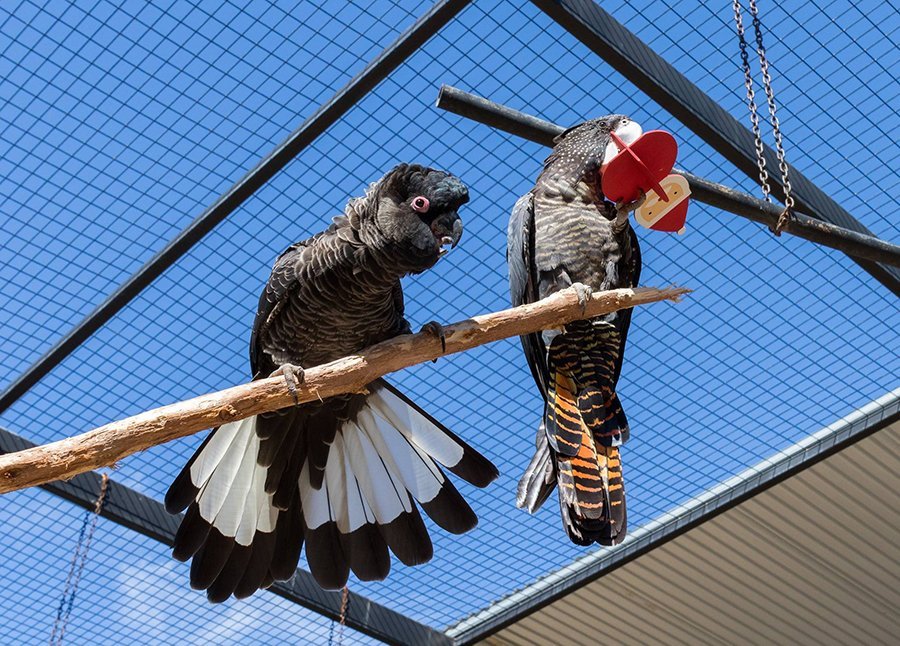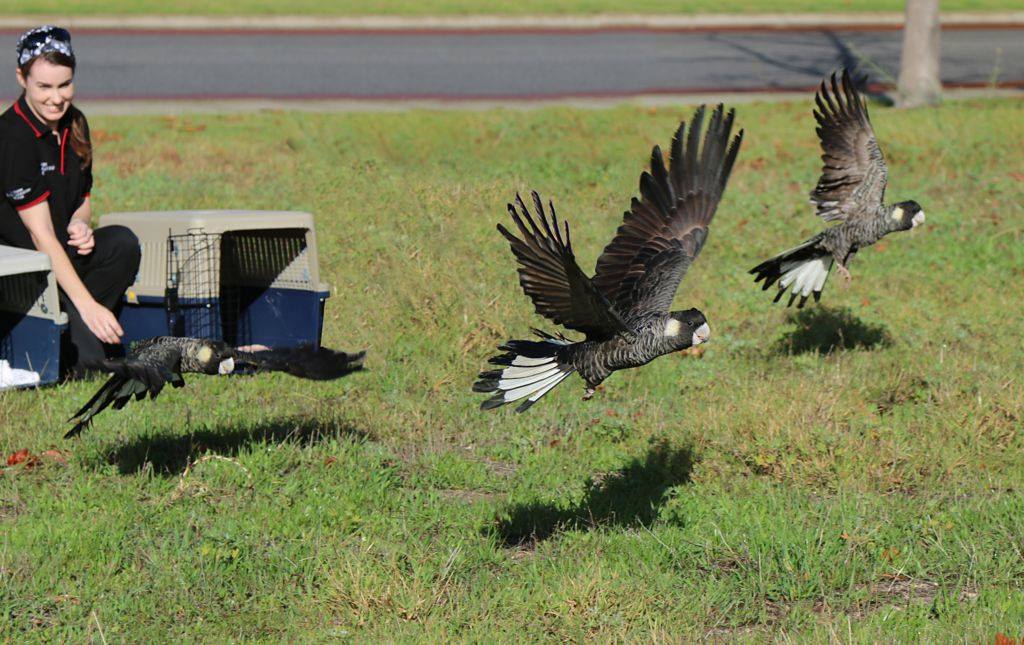Fighting to save WA’s black cockatoos

YOU MAY NOT be familiar with the Kaarakin Black Cockatoo Centre, but it’s likely you’ve seen the viral clip of a galah entertaining itself by going round and round on a mounted bicycle wheel.
The bizarre contraption was an invention of Bill Dewhurst, the father of the founder of the centre, Glenn Dewhurst. According to Glenn, this is just one of the ways they keep the birds busy.
The galah, rather than being a resident of the centre, is actually just a visitor. Kaarakin is dedicated to the rehabilitation of Australia’s three threatened species of black cockatoo: Baudin’s, Carnaby’s and the forest red-tailed.
Located in Martin, a south-eastern suburb of Perth, the centre is operated by over 100 volunteers who work from week to week, locating, recovering and releasing black cockatoos.
Humble beginnings
Back in 2004, Glenn and his wife began operating a small sanctuary out of their home after hearing so many horror stories of rehabilitated birds being sold on the black market.
Based on results from the annual Great Cocky Count, conducted in WA’s southwest by the Department of Environment and Conservation, the number of black cockatoos is in steep decline, making them all the more lucrative in illegal sales of wildlife.
At the same time the couple started the sanctuary, they were looking after their own young children as well as the cockatoo chicks.
“My wife did all the rescues from the mid-west to the metropolitan area, which added up to about 25,000km a year and of that 25,000km my wife did about 18,000kms with new born’s,” Glenn says.
Eventually, the need for a larger area and extra hands became urgent, and the sanctuary moved to its current location in Perth in 2008.

Glenn’s daughters at Karrakin.
The three musketeers
The forest red-tailed, Carnaby’s and Baudin’s cockatoo are all listed as threatened under state and Commonwealth legislation.
Loss of habitat through land clearing is considered to be the main cause for all three cockatoo’s population decline.
According to the head of bird management, Georgia Kerr, who started volunteering at Kaarakin back in 2015, most of the black cockatoos Kaarakin rescues are victims of vehicle strikes.
“If they’ve been hit by a car, they have a really low survival rate. Once we rescue them we take them to Perth Zoo for that initial veterinary care and often they won’t survive so they don’t make it back to the rehabilitation centre.”
Other birds delivered to Kaarakin are displaced juveniles or juveniles that have been abandoned by their parents, leaving them vulnerable to attacks.
Carnarby’s cockatoo, one of two white-tailed black cockatoo species treated at Kaarakin, however, will often come in with what scientists have called ‘Carnaby’s hind limb paralysis’, which is caused by the consumption of fertiliser phosphate in the soil.
The other white-tailed cockatoo, the Baudin’s, hardly makes an appearance at the centre, and Georgia says she’s not quite sure if this is good or bad.
“We’ve got three in at the moment and we’ve got a couple that are non-releasable. That we don’t get many in is semi-good, but it also gives you an idea of how small the populations really are.”

Black cockatoos at Kaarakin. (Image credit: Kaarakin Black Cockatoo Centre)
The future for WA’s black cockatoos
Georgia says that while you may see a lot of black cockatoos in the city, their populations are much smaller than they look.
“They’re not supposed to be in the city in the first place, and if they’re there, it means they’ve been displaced from their normal habitat,” she says.
“There’s a big misunderstanding about how many birds are actually left.”
Kaarakin plays a big role in educating the public about the black cockies’ current conservation status and what can be done to prevent extinction.
The centre intends on eventually being open to the public.
“Having tours and letting people fall in love with the birds is the only real way to save them in the long run.
“Hopefully visitors will go home and plant some native trees or even chat to their local council and slow down on the road.”
Founder Glenn says that once the kids are on board, parents have no choice.
“It’s a bit like recycling. People don’t recycle well until the school educates the kids and then they go home and nag their parents. It all comes down to education,” he says.

(Image Credit: Kaarakin Black Cockatoo Centre)
READ MORE:




